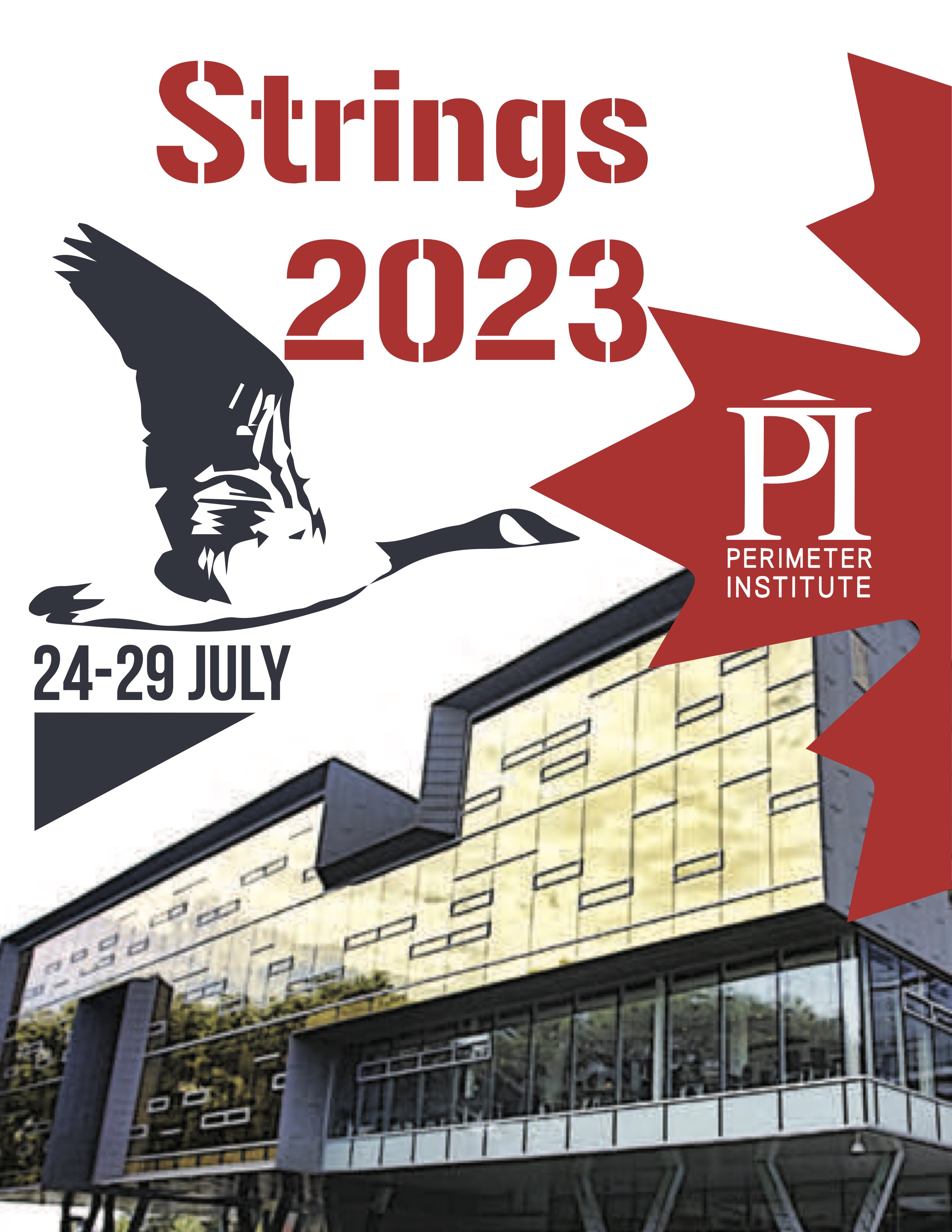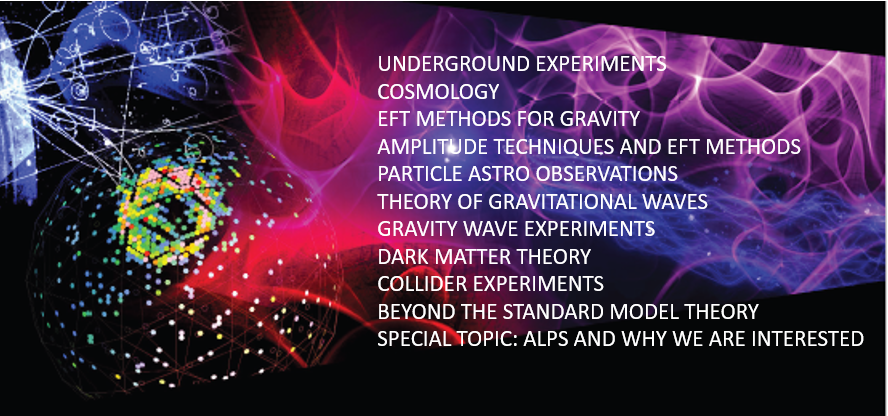Format results
-
Talk
-
-
Talk
-
-
Talk
-
-
Talk
-
Lessons of the Effective Field Theory Treatment of General Relativity
John Donoghue University of Massachusetts Amherst
-
Positivity Bounds and Effective Fields Theories (A Review)
Andrew Tolley Imperial College London
-
Holography and its implications for quantum gravity - VIRTUAL
Johanna Erdmenger University of Würzburg
-
A hike through the Swamp
Miguel Mlontero IFT Madrid
-
Piecing Together a Flat Hologram
Sabrina Pasterski Perimeter Institute for Theoretical Physics
-
Open Discussion with today's speakers (Donoghue, Erdmenger, Montero, Pasterski, Tolley)
-
John Donoghue University of Massachusetts Amherst
-
Johanna Erdmenger University of Würzburg
-
Miguel Mlontero IFT Madrid
-
Sabrina Pasterski Perimeter Institute for Theoretical Physics
-
Andrew Tolley Imperial College London
-
-
Panel Discussion - Strengths and limitations of EFT (Donoghue, Knorr, Montero, Quevedo, Tolley)
-
John Donoghue University of Massachusetts Amherst
-
Miguel Mlontero IFT Madrid
-
Fernando Quevedo University of Cambridge
-
Carlo Rovelli Centre de Physique Théorique
-
Andrew Tolley Imperial College London
-
-
Status, perspective and three challenges in the asymptotic-safety paradigm for quantum gravity - VIRTUAL
Astrid Eichhorn University of Southern Denmark
-
-
Talk
-
3pt functions: Yes Q's
Pedro Vieira Perimeter Institute for Theoretical Physics
-
An explicit solution
Paul Ryan King's College London
-
QSC definition in N=4
Paul Ryan King's College London
-
Q-functions in spin chains. QSC for spin chains
Paul Ryan King's College London
-
3pt function: No Q's
Pedro Vieira Perimeter Institute for Theoretical Physics
-
-
Talk
-
Classical Physics Lecture - 100323
Aldo Riello Perimeter Institute for Theoretical Physics
PIRSA:23090037 -
Classical Physics Lecture - 100223
Aldo Riello Perimeter Institute for Theoretical Physics
PIRSA:23100033 -
Classical Physics Lecture - 092723
Aldo Riello Perimeter Institute for Theoretical Physics
PIRSA:23090036 -
Classical Physics Lecture - 092623
PIRSA:23090097 -
Classical Physics Lecture - 092523
Aldo Riello Perimeter Institute for Theoretical Physics
PIRSA:23090035 -
Classical Physics Lecture - 092223
Aldo Riello Perimeter Institute for Theoretical Physics
PIRSA:23090034 -
Classical Physics Lecture - 092023
Aldo Riello Perimeter Institute for Theoretical Physics
PIRSA:23090033 -
Classical Physics Lecture - 091823
Aldo Riello Perimeter Institute for Theoretical Physics
PIRSA:23090032
-
-
Talk
-
Quantum Theory Lecture - 100323
-
Bindiya Arora Perimeter Institute for Theoretical Physics
-
Dan Wohns Perimeter Institute for Theoretical Physics
PIRSA:23090049 -
-
Quantum Theory Lecture - 100223
-
Bindiya Arora Perimeter Institute for Theoretical Physics
-
Dan Wohns Perimeter Institute for Theoretical Physics
PIRSA:23100034 -
-
Quantum Theory Lecture - 092723
-
Bindiya Arora Perimeter Institute for Theoretical Physics
-
Dan Wohns Perimeter Institute for Theoretical Physics
PIRSA:23090048 -
-
Quantum Theory Lecture - 092623
Dan Wohns Perimeter Institute for Theoretical Physics
PIRSA:23090098 -
Quantum Theory Lecture - 092523
-
Bindiya Arora Perimeter Institute for Theoretical Physics
-
Dan Wohns Perimeter Institute for Theoretical Physics
PIRSA:23090047 -
-
Quantum Theory Lecture - 092123
-
Bindiya Arora Perimeter Institute for Theoretical Physics
-
Dan Wohns Perimeter Institute for Theoretical Physics
PIRSA:23090046 -
-
Quantum Theory Lecture - 092023
-
Bindiya Arora Perimeter Institute for Theoretical Physics
-
Dan Wohns Perimeter Institute for Theoretical Physics
PIRSA:23090045 -
-
Quantum Theory Lecture - 091823
-
Bindiya Arora Perimeter Institute for Theoretical Physics
-
Dan Wohns Perimeter Institute for Theoretical Physics
PIRSA:23090044 -
-
-
Talk
-
-
QPV: An Overview and Reflections
Harry Buhrman Centrum Wiskunde & Informatica
-
Popescu-Rohrlich correlations imply efficient instantaneous nonlocal quantum computation
Anne Broadbent University of Ottawa
PIRSA:23090023 -
Non-local quantum computation meets quantum gravity
Alex May Perimeter Institute
-
Quantum Error-Correction and Holographic Task
Beni Yoshida Perimeter Institute for Theoretical Physics
-
-
Protocols and Implementations of Quantum Position Verification
-
Eric Chitambar University of Illinois Urbana-Champaign
-
Paul Kwiat University of Illinois
-
-
-
-
Talk
-
Extended Wigner's Friend Inequalities are Nonclassical Causal Compatibility Inequalities
Marina Maciel AnsanelliPIRSA:23090058
-
-
Talk
-
Talk 44 - Large N von Neumann Algebras and the renormalization of Newton's constant
Elliott Gesteau California Institute of Technology (Caltech)
-
Talk 88 - Type II_1 algebras for local subregions in quantum gravity
Antony Speranza University of Illinois Urbana-Champaign
-
Talk 124 - von Neumann algebras in JT gravity with matter
David Kolchmeyer Massachusetts Institute of Technology
-
Talk 61 - Horizons are Watching You
Gautam Satishchandran -
An SYK model with a scaling similarity.
Juan Maldacena Institute for Advanced Study (IAS) - School of Natural Sciences (SNS)
-
Petz recovery from subsystems in conformal field theory
Shreya Vardhan Stanford University
-
-
-
-
Talk
-
Opening Remarks
Robert Myers Perimeter Institute for Theoretical Physics
-
-
Research Talk 2 - Burns holography
Atul Sharma Harvard University
-
Research Talk 3 - Swampland and a Unification of the Dark Sector
Cumrun Vafa Harvard University
-
Research Talk 4 - A universal pattern at infinite field distance
Irene Valenzuela -
-
Research Talk 5 - Crossing beyond scattering amplitudes
Hofie Hannesdottir -
-
-
Talk
-
-
General Relativity for Cosmology
This is an advanced graduate course which develops the math and physics of general relativity from scratch up to the highest level. The going will sometimes be steep but I try to be always careful. The purpose is to prepare for studies in quantum gravity, relativistic quantum information, black hole physics and cosmology. Quick summary of the contents: - Coordinate-free Differential Geometry, Weyl versus Ricci curvature versus Torsion, Vielbein Formalism, Spin-connections, Form-valued Tensors, Spectral Geometry, some Cohomology. - Derivations of General Relativity including as a Gauge Theory, Diffeomorphism Invariance vs. Symmetries, Bianchi Identities vs. Local and Global Conservation Laws. - Penrose Diagrams for Black Holes and Cosmology, Types of Horizons, Energy Conditions and Singularity theorems, Properties and Classification of Exact Solutions. - Cosmology and Models of Cosmic Inflation -
-
Quantum Field Theory 1 2023/24
Quantum Field Theory 1 2023/24 -
Puzzles in the Quantum Gravity Landscape: viewpoints from different approaches
Unraveling the quantum nature of gravity is one of the most pressing problems of theoretical physics. Several ideas have been put forward and resulted in a number of theories of quantum gravity. While these theories have explored different facets of the “quantum gravity landscape”, all viable approaches should ultimately make contact with observations, and answer exciting questions in cosmology and black-hole physics.
Sharing knowledge, exchanging ideas, and building a dictionary between different theories are crucial steps toward answering these questions, efficiently contrasting different theories, and ultimately reaching a deeper understanding of our Universe.
This conference will contribute to these goals by bringing together leading experts in different approaches to quantum gravity, gravitational effective field theory, black-hole physics, and cosmology. We will focus on specific puzzles in quantum gravity and their resolutions within different approaches. The conference will be highly interactive, with plenty of time to discuss common problems, understand the big picture, and develop novel connections between fields.Registration: Registration is now open, and both in-person and virtual participation is welcome. Online participants will be able to interact on an equal footing in question sessions and discussions. In-person attendance is limited and will be approved on a first-come, first-served basis. Talks are by invitation only, but in-person participants are encouraged to apply to present a poster.
Spam warning: There is an increasing number of scam agencies reaching out to conference speakers and attendees. Perimeter Institute does not use third-party agencies. We advise speakers and attendees to ignore emails and not to provide any details to anyone who is not from Perimeter Institute.
Confirmed Speakers and Panelists:
- Abhay Ashtekar (Penn State University)
- Robert Brandenberger (McGill University)
- Luca Buoninfante (Nordita)
- Xavier Calmet (University of Sussex)
- Francesco di Filippo (Kyoto University)
- Bianca Dittrich (Perimeter Institute)
- John Donoghue (University of Massachusetts)
- Astrid Eichhorn (CP3-origins)
- Johanna Erdmenger (Würzburg University)
- Ghazal Geshnizjani (Perimeter Institute)
- Ruth Gregory (King's College)
- Lavinia Heisenberg (Heidelberg University)
- Bob Holdom (University of Toronto)
- Benjamin Knorr (Nordita)
- Renate Loll (Radboud University Nijmegen)
- Miguel Montero (IFT Madrid)
- Rob Myers (Perimeter Institute)
- Sabrina Pasterski (Perimeter Institute)
- Fernando Quevedo (Cambridge University)
- Lisa Randall (Harvard University)
- Kasia Rejzner (York University)
- Mairi Sakellariadou (King's College)
- Lee Smolin (Perimeter Institute)
- Kellogg Stelle (Imperial College)
- Sumati Surya (Raman Research Institute)
- Andrew Tolley (Imperial College)
- Neil Turok (University of Edinburgh)
- Pedro Vieira (Perimeter Institute)
- Yasaman Yazdi (Imperial College)
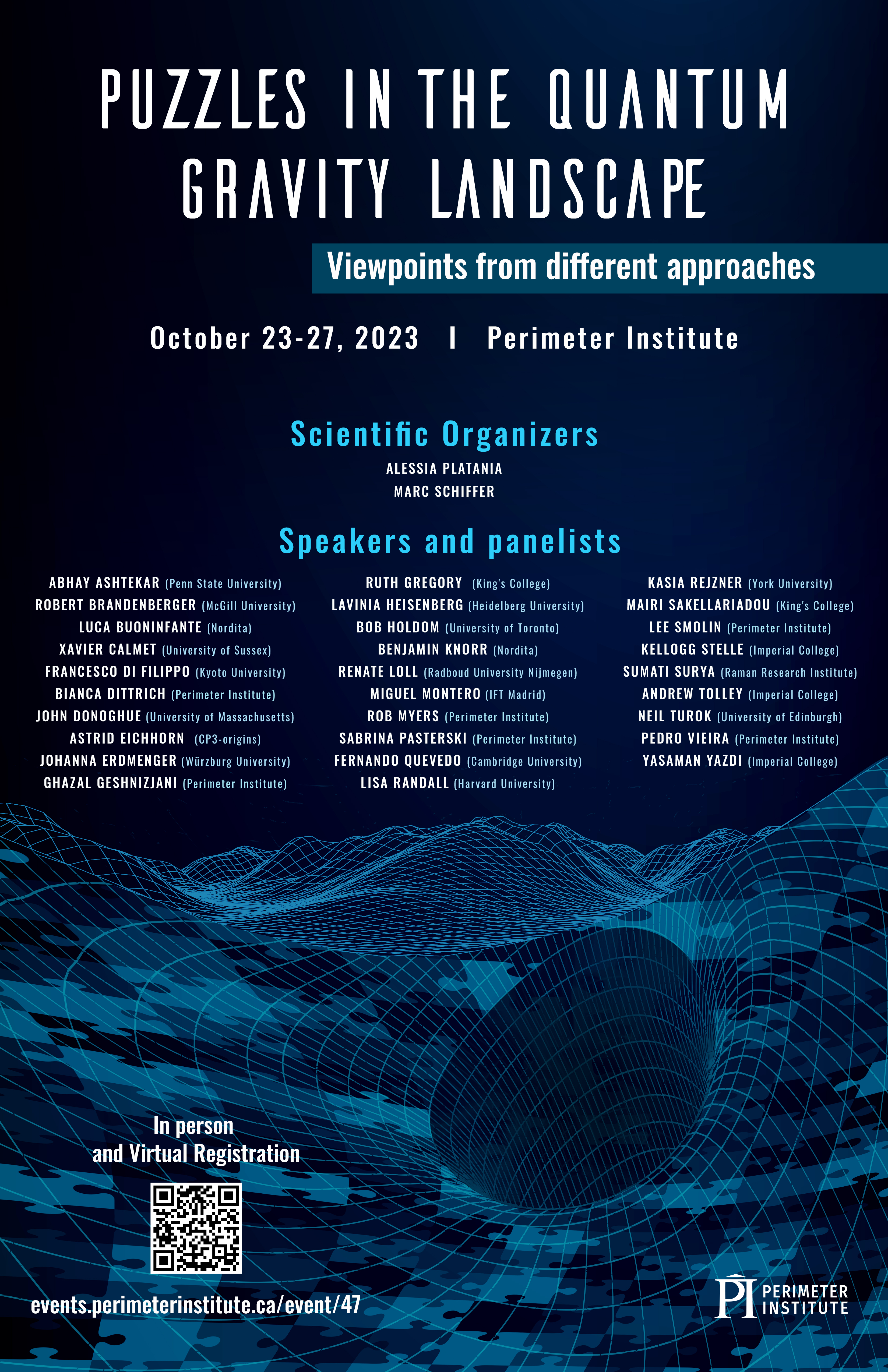
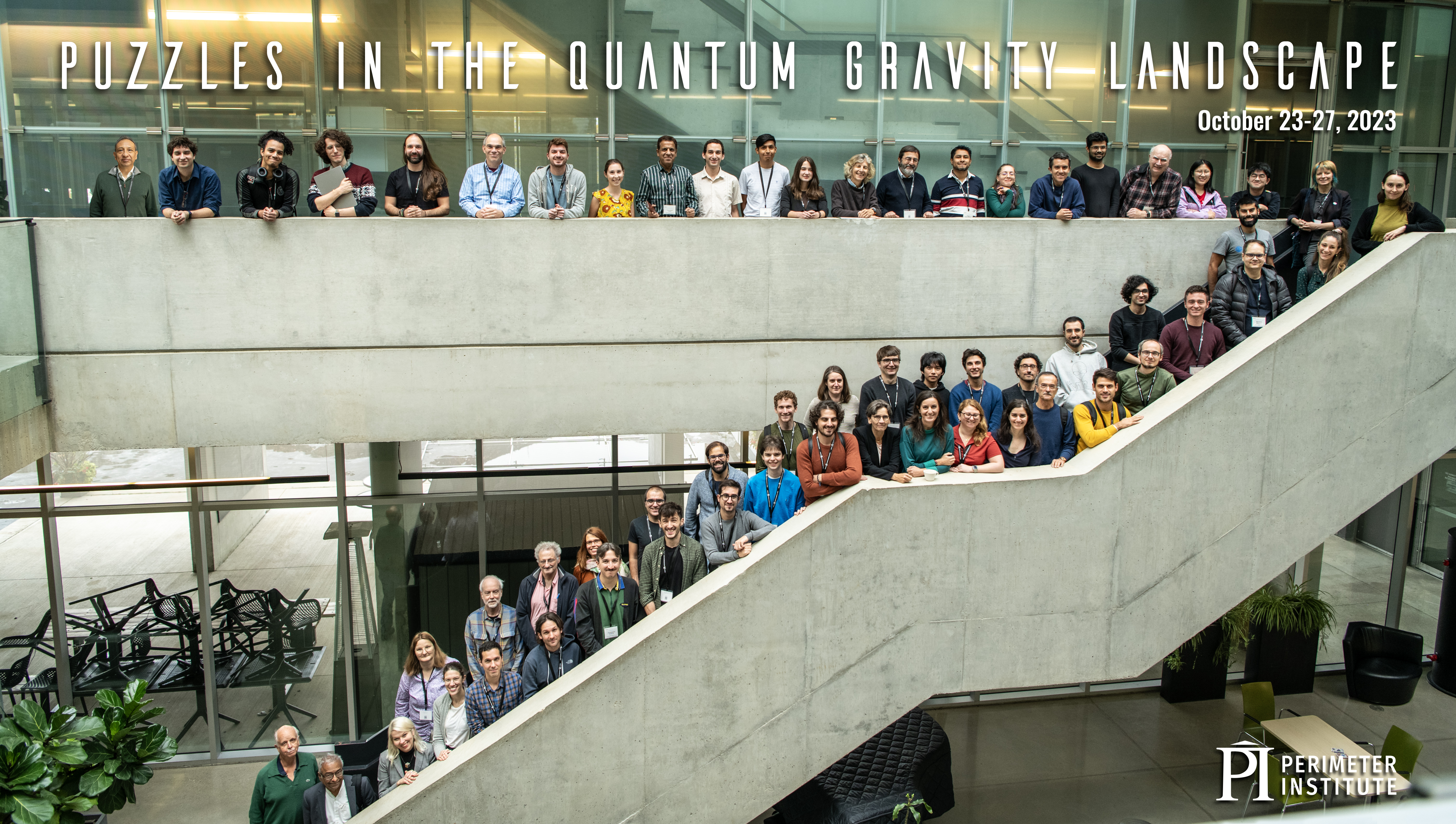
Territorial Land Acknowledgement
Perimeter Institute acknowledges that it is situated on the traditional territory of the Anishinaabe, Haudenosaunee, and Neutral peoples.
Perimeter Institute is located on the Haldimand Tract. After the American Revolution, the tract was granted by the British to the Six Nations of the Grand River and the Mississaugas of the Credit First Nation as compensation for their role in the war and for the loss of their traditional lands in upstate New York. Of the 950,000 acres granted to the Haudenosaunee, less than 5 percent remains Six Nations land. Only 6,100 acres remain Mississaugas of the Credit land.
We thank the Anishinaabe, Haudenosaunee, and Neutral peoples for hosting us on their land.
-
Quantum Spectral Curve and Three Point Functions mini-course
In this mini-course we will describe some recent integrability developments in N=4 SYM. Pedro will start with some overview of three point functions in this theory. Paul will introduce the powerful Quantum Spectral Curve formalism describing the full planar spectrum of N=4 SYM starting with some elementary spin chain introduction. In this formalism, each operator in the theory is governed by a (set of) Q-function(s). In his last lecture Paul will walk us through an explicit example from beginning to end of a QSC solution. Pedro will then describe some explorations on three point correlation functions in this theory. The goal would be to have a machine where three Q-functions are given as input and a three-point function is spit out as output. We will describe where we are in this quest.
No Zoom link or hybrid participation available. Registration is not required.
-
-
-
QPV 2023: Advances in quantum position verification
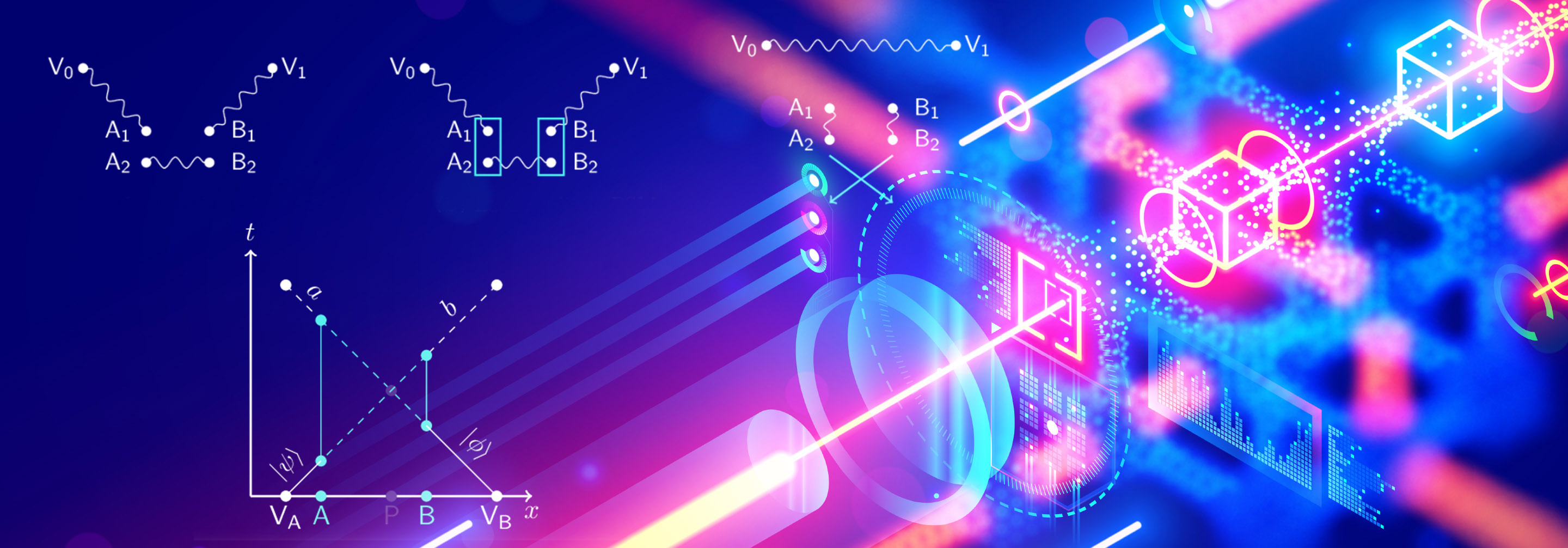
Quantum position verification (QPV) schemes use the properties of quantum information and the relativistic signalling bound to verify the location of an object (sometimes called a “tag”) to distant observers in an environment that may contain would-be spoofers. The guarantee is based on the assumptions of the underlying security model; various theoretically and practically interesting security models have been proposed. The area is attracting increasing interest, with new theoretical developments in security analyses, emerging experimental studies of QPV systems, and recently discovered surprising and intriguing connections to topics in quantum gravity. A workshop on QPV will be held at the Perimeter Institute for Theoretical Physics.
The workshop will cover topics related to all aspects of QPV, including, but not limited to:
- Theoretical developments related to the security of QPV schemes, including development or refinement of security models, proofs of security within given models, tradeoffs between security and efficiency, and Experimental studies of QPV and theoretical work aimed at developing practical QPV schemes.
- QPV’s relationship to other cryptographic tasks and primitives.
- QPV’s relationship to holography and quantum gravity.

Territorial Land Acknowledgement
Perimeter Institute acknowledges that it is situated on the traditional territory of the Anishinaabe, Haudenosaunee, and Neutral peoples.
Perimeter Institute is located on the Haldimand Tract. After the American Revolution, the tract was granted by the British to the Six Nations of the Grand River and the Mississaugas of the Credit First Nation as compensation for their role in the war and for the loss of their traditional lands in upstate New York. Of the 950,000 acres granted to the Haudenosaunee, less than 5 percent remains Six Nations land. Only 6,100 acres remain Mississaugas of the Credit land.
We thank the Anishinaabe, Haudenosaunee, and Neutral peoples for hosting us on their land.
-
Perimeter Institute Graduate Students’ Conference 2023
The annual Graduate Students’ Conference showcases the diverse research directions at Perimeter Institute, both organized and presented by the students. Our graduate students are invited to share their best work with their fellow PhD students, PSI students and other PI residents interested in hearing about physics research and discussing it in a lively atmosphere full of questions.
Territorial Land Acknowledgement
Perimeter Institute acknowledges that it is situated on the traditional territory of the Anishinaabe, Haudenosaunee, and Neutral peoples.
Perimeter Institute is located on the Haldimand Tract. After the American Revolution, the tract was granted by the British to the Six Nations of the Grand River and the Mississaugas of the Credit First Nation as compensation for their role in the war and for the loss of their traditional lands in upstate New York. Of the 950,000 acres granted to the Haudenosaunee, less than 5 percent remains Six Nations land. Only 6,100 acres remain Mississaugas of the Credit land.
We thank the Anishinaabe, Haudenosaunee, and Neutral peoples for hosting us on their land.
-
It from Qubit 2023
The final meeting of It from Qubit: Simons Collaboration on Quantum Fields, Gravity, and Information will be devoted to recent developments at the interface of fundamental physics and quantum information theory, spanning topics such as
- chaos and thermalization in many-body systems and their realization in quantum gravity;
- information-theoretic constraints on quantum field theories and their RG flows and symmetries;
- gravitational wormholes and their information-theoretic implications;
- calculable lower-dimensional models of quantum gravity; the entanglement structure of semi-classical states in quantum gravity;
- quantum error-correcting codes in quantum field theory and quantum gravity;
- complexity in field theory and gravity;
- the black-hole information puzzle;
- quantum simulation of quantum field theories and quantum gravity.
Recorded talks: https://pirsa.org/C23021
Territorial Land Acknowledgement
Perimeter Institute acknowledges that it is situated on the traditional territory of the Anishinaabe, Haudenosaunee, and Neutral peoples.
Perimeter Institute is located on the Haldimand Tract. After the American Revolution, the tract was granted by the British to the Six Nations of the Grand River and the Mississaugas of the Credit First Nation as compensation for their role in the war and for the loss of their traditional lands in upstate New York. Of the 950,000 acres granted to the Haudenosaunee, less than 5 percent remains Six Nations land. Only 6,100 acres remain Mississaugas of the Credit land.
We thank the Anishinaabe, Haudenosaunee, and Neutral peoples for hosting us on their land.
-
Strings 2023
The Perimeter Institute for Theoretical Physics is delighted to host the 33rd installment of Strings, the flagship annual conference for the extended string theory community.
Strings 2023 will take place at PI July 24-29. Capacity is limited to 200 in-person attendees. The programming will incorporate an interactive simulcast for virtual attendees.Recorded talks: https://pirsa.org/C23001
Organizing Committee: Sabrina Pasterski,* Freddy Cachazo, Kevin Costello, Davide Gaiotto, Jaume Gomis, Rob Myers, Pedro Vieira, & Alex Buchel.
Territorial Land Acknowledgement
Perimeter Institute acknowledges that it is situated on the traditional territory of the Anishinaabe, Haudenosaunee, and Neutral peoples.
Perimeter Institute is located on the Haldimand Tract. After the American Revolution, the tract was granted by the British to the Six Nations of the Grand River and the Mississaugas of the Credit First Nation as compensation for their role in the war and for the loss of their traditional lands in upstate New York. Of the 950,000 acres granted to the Haudenosaunee, less than 5 percent remains Six Nations land. Only 6,100 acres remain Mississaugas of the Credit land.
-
TRISEP 2023
Talks are recorded and posted on PIRSA (within approx 24 hours).
The 2023 Tri-Institute Summer School on Elementary Particles (TRISEP) will be held June 19-30, 2023 in Perimeter Institute for Theoretical Physics, Waterloo, ON, Canada.
TRISEP is an international summer school organized jointly by the Perimeter Institute for Theoretical Physics, SNOLAB, and TRIUMF Canada's laboratory for particle and nuclear physics. TRISEP will feature lectures by leading experts in the field of particle physics in its broadest sense and is designed to be very interactive with ample time for questions, discussions and interaction with the speakers. The school is intended for graduate students of all levels who were already exposed to quantum field theory.Registration for in person attendance to TRISEP is now open. Anyone requiring financial assistance to attend must apply by May 19. Requests for financial assistance are vetted on a case-by-case basis and application for funding is not guaranteed.
Previous TRISEP Schools:
2022, 2021, 2019, 2018, 2017, 2016, 2015, 2014 and 2013.
Territorial Land AcknowledgementPerimeter Institute acknowledges that it is situated on the traditional territory of the Anishinaabe, Haudenosaunee, and Neutral peoples.
Perimeter Institute is located on the Haldimand Tract. After the American Revolution, the tract was granted by the British to the Six Nations of the Grand River and the Mississaugas of the Credit First Nation as compensation for their role in the war and for the loss of their traditional lands in upstate New York. Of the 950,000 acres granted to the Haudenosaunee, less than 5 percent remains Six Nations land. Only 6,100 acres remain Mississaugas of the Credit land.
We thank the Anishinaabe, Haudenosaunee, and Neutral peoples for hosting us on their land.


